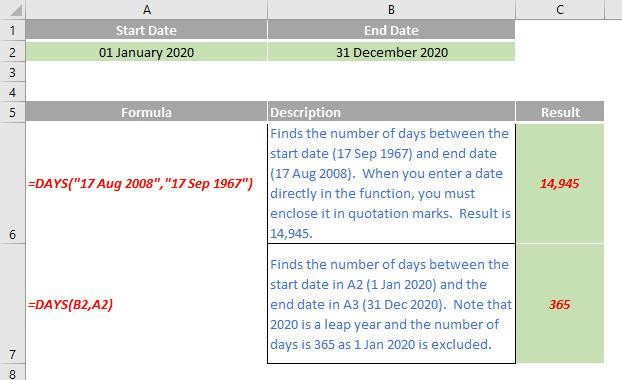A to Z of Excel Functions: The DAYS Function
20 April 2018
Welcome back to our regular A to Z of Excel Functions blog. Today we look at the DAYS function.
The DAYS function
This function returns the number of days between two dates.

The DAYS function employs the following syntax to operate:
DAYS(end_date, start_date)
The DAYS function has the following arguments:
- end_date: this is required and should be a date not prior to start_date
- start_date: this is also required. The dates start_date and end_date are the two dates between which you want to know the number of days.
It should be further noted that:
- Excel stores dates as sequential serial numbers so that they can be used in calculations. By default, Jan 1, 1900 is serial number 1, and January 1, 2008 is serial number 39448 because it is 39447 days after January 1, 1900
- If both date arguments are numbers, DAYS uses end_date – start_date to calculate the number of days in between both dates. Be clear, start_date is not counted in the number of days between the two dates
- If either one of the date arguments is text, that argument is treated as DATEVALUE(date_text) and returns an integer date instead of a time component
- If date arguments are numeric values that fall outside the range of valid dates, DAYS returns the #NUM! error value
- If date arguments are strings that cannot be parsed as valid dates, DAYS returns the #VALUE! error value
- This function was new to Excel 2013.
Please see my example below:

Still not sure why you can’t just subtract one date from another…
We’ll continue our A to Z of Excel Functions soon. Keep checking back – there’s a new blog post every business day.
A full page of the function articles can be found here.

